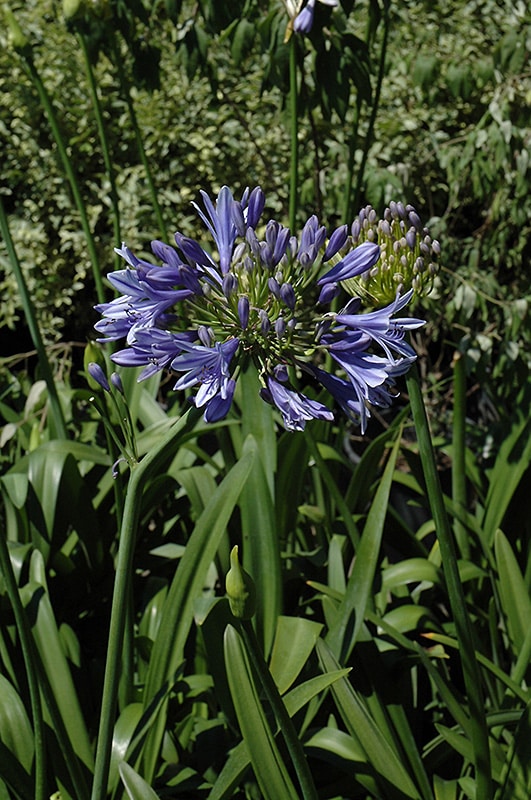Seasonal Agapanthus Treatment: Getting Ready For Wintertime and Summertime
Seasonal Agapanthus Treatment: Getting Ready For Wintertime and Summertime
Blog Article
Grasping the Art of Agapanthus Care: Vital Actions for Healthy Growth and Lively Blooms
In the realm of gardening, the cultivation of agapanthus stands as a gratifying endeavor for those who seek to nurture these stylish flowering plants. From picking the appropriate variety to mastering trimming strategies, the trip in the direction of growing thriving agapanthus plants is diverse and holds the essential to unlocking the full possibility of these herb gems.

Choosing the Right Agapanthus Selection

When picking the ideal Agapanthus variety for your yard, consider variables such as climate suitability, flower color, and development routine. Additionally, take into consideration the climate in your area to guarantee the Agapanthus selection you choose can grow in your particular problems. Comprehending the development practice of various Agapanthus varieties is critical for proper positioning within your garden.
Suitable Growing Conditions
Thinking about the optimum environmental needs is important for effective Agapanthus farming. Agapanthus grows in well-draining dirt with a slightly acidic to neutral pH degree. When growing, choose a place that obtains complete sunshine to partial color. In hotter environments, giving some afternoon color can prevent scorching of the fallen leaves. Agapanthus plants are sensitive to cold temperatures and ought to be safeguarded from frost throughout winter season.
To ensure healthy and balanced development and dynamic blooms, plant Agapanthus light bulbs at a depth of concerning 2-4 inches and area them 8-12 inches apart. Mulching around the base of the plants assists retain moisture and subdues weed growth.
Watering and Fertilizing Tips
Maintaining correct wetness degrees and supplying crucial nutrients are vital aspects in the care program for Agapanthus plants. When it involves watering Agapanthus, it is crucial to strike an equilibrium. These plants choose consistently moist dirt but are susceptible to root rot if overwatered. Throughout the expanding season, water deeply as soon as a week, making sure the soil is well-draining to stop waterlogging. In hotter environments or during durations of drought, more frequent watering may be essential to keep the dirt evenly damp. Nonetheless, reduce watering in the wintertime to avoid waterlogged conditions.
Feeding Agapanthus is vital for advertising healthy development and respected blossoms. Use a well balanced plant food, such as a 10-10-10 formula, in the very early spring as brand-new development arises. By adhering to these watering and feeding ideas, you can guarantee your Agapanthus plants prosper and create lively, resilient flowers.
Pruning Techniques for Agapanthus
Trimming Agapanthus plants at the ideal times click here for more and with correct strategies is critical for keeping their health and wellness and promoting ideal development and flowering. The ideal time to prune Agapanthus remains in late winter or very early springtime prior to new growth emerges. Begin by eliminating any dead or yellowing fallen leaves near the base of the plant. Cut them as close to the ground as feasible without harming the arising shoots.
For flowered stems, wait till the blooms have withered and then cut them back to the base. This not only cleans up the plant's look however also urges the advancement of brand-new blossom buds. Deadheading spent blossoms can also reroute the plant's energy right into creating even more blooms as opposed to setting seeds. However, if you desire to collect seeds for breeding, leave some blossoms to completely dry and mature on the plant.
Keep in mind to make use of clean, sharp devices to make accurate cuts and lower the danger of presenting conditions. Agapanthus. Regular trimming will assist maintain your Agapanthus looking cool and healthy while making certain a plentiful display of stunning blooms
Handling Typical Bugs and Conditions
After making certain appropriate trimming methods for Agapanthus, it is vital to resolve common bugs and diseases that can affect the health and wellness and vitality of these plants. Agapanthus plants are typically sturdy yet can still drop victim to his explanation specific problems. One typical bug that influences Agapanthus is the Agapanthus gall midget. This tiny, orange fly lays its eggs in the foliage, resulting in distorted growth and flower buds that fall short to open. To combat this insect, prune and ruin any kind of affected plant parts and think about utilizing insecticidal soap.
Another usual problem is fungal leaf spot, which presents as dark sores on the you could check here fallen leaves. To stop fungal illness, make certain excellent air blood circulation around the plants, prevent above watering, and remove any kind of contaminated leaves without delay. In addition, Agapanthus plants can experience root rot if they are grown in inadequately draining soil. To avoid this, plant Agapanthus in well-draining soil and avoid overwatering. By being vigilant and taking punctual action against conditions and bugs, you can help your Agapanthus plants grow and create vibrant flowers.

Final Thought
Finally, mastering the art of agapanthus care involves selecting the right variety, offering optimal planting conditions, proper watering and fertilizing, suitable pruning techniques, and addressing common pests and conditions. By adhering to these essential actions, you can make certain healthy and balanced development and vivid flowers for your agapanthus plants. Keep in mind to on a regular basis keep an eye on and maintain your plants to advertise their general wellness and longevity.
To ensure healthy and balanced development and dynamic blooms, plant Agapanthus light bulbs at a deepness of regarding 2-4 inches and area them 8-12 inches apart. By following these watering and feeding ideas, you can ensure your Agapanthus plants thrive and generate lively, resilient blooms.
One usual bug that impacts Agapanthus is the Agapanthus gall midge. In addition, Agapanthus plants can experience from origin rot if they are grown in badly draining pipes soil. By following these essential actions, you can ensure healthy and balanced growth and vivid flowers for your agapanthus plants.
Report this page